For aquarium enthusiasts, understanding How to Identify Fish Eggs in an Aquarium is important for proper care and thus the development of fish. If those aquarium keepers who love to breed fish have an eye for such interesting activity, it will be no doubt so much of a successful one for the hobbyists. Variation in fish eggs is species dependent, and the knowledge of their characteristics is the deciding factor for their survival and the fact that they will not get endangered in the tank.
This article is going How to Identify Fish Eggs in an Aquarium, what they look like, and the actions you can take to help them. At the end of the article, you will have a clear perception of fish eggs in your aquarium, as well as how to bring about a robust underwater ecosystem.
What Do Fish Eggs Look Like?
Fish eggs differ in appearance depending on the species. Typically, they are small, round, and gelatinous. Some eggs are transparent, while others may have shades of white, yellow, or even orange.
General Characteristics of Fish Eggs:
| Feature | Description |
|---|---|
| Shape | Round or oval |
| Size | Varies by species (from 0.5 mm to several millimeters) |
| Color | Clear, white, yellow, orange, or slightly pink |
| Texture | Gelatinous, smooth, and sticky for adhesion to surfaces |
| Behavior in Water | Float, sink, or stick to surfaces like plants, rocks, or glass |
For instance, cichlid eggs are adhesive and stick to flat surfaces, while goldfish eggs are spherical and sticky, often found attached to plants.
How to Identify Fish Eggs in an Aquarium by Behavior
Observing your fish’s behavior is crucial in identifying eggs. Fish exhibit specific breeding habits before and during egg-laying. By closely watching your aquarium, you can determine if eggs are present or about to be laid.
Pre-Breeding Behavior:
- Nesting: Some fish, like bettas or cichlids, build nests before laying eggs. Bubble nests are common in labyrinth fish species.
- Chasing or Courtship: Male fish may chase females as part of the mating ritual.
- Surface Cleaning: Fish may clean surfaces like rocks, plants, or glass where they plan to lay eggs.
Egg-Laying Behavior:
- Female fish deposit eggs, often accompanied by males fertilizing them immediately.
- Eggs are laid in clusters, rows, or as individual deposits, depending on the species.
Common Places to Find Fish Eggs in an Aquarium
Fish eggs can be found in several locations within the aquarium. Understanding their preferred spots can help you locate and identify them more effectively.
Locations Where Fish Lay Eggs:
- Plants: Adhesive eggs are often stuck to aquatic plants, such as moss or grass.
- Substrate: Some species bury their eggs in gravel or sand.
- Aquarium Glass: Fish like tetras may deposit eggs on glass walls.
- Decorations: Rocks, driftwood, or artificial decorations are frequent egg-laying spots.
- Nests: Certain species, like gouramis, create bubble nests on the water’s surface.
Differentiating Fish Eggs from Other Objects
It’s common to confuse fish eggs with debris or uneaten food in the tank. Here are some tips to distinguish fish eggs:
- Shape: Eggs are perfectly round or slightly oval.
- Cluster Formation: Eggs are laid in clusters rather than scattered randomly.
- Adhesion: Most eggs are sticky and attach to surfaces, unlike debris that floats freely.
- Movement: Eggs remain stationary unless disturbed by water flow.
Also see – 10 Low Maintenance Aquarium Fish: Best for Beginners
How to Care for Fish Eggs in an Aquarium
Ensuring the survival of fish eggs requires careful management. Follow these steps for effective care:
1. Separate the Eggs
Adult fish, including parents, may eat the eggs. Using a breeding box or transferring eggs to a separate tank can prevent predation.
2. Maintain Optimal Water Conditions
- Temperature: Keep water temperature within the species’ breeding range.
- Filtration: Use sponge filters to maintain water flow without disturbing the eggs.
- pH Levels: Ensure pH levels are stable and suitable for the species.
3. Provide Aeration
Adequate oxygen levels are essential for eggs to develop. Gentle aeration near the eggs helps prevent fungus and promotes healthy development.
4. Prevent Fungus Growth
Fungal infections are a major threat to fish eggs. Use anti-fungal treatments like methylene blue, especially if the eggs are fertilized.
Signs of Fertilized vs. Unfertilized Eggs
Knowing the status of eggs being fertilized has a crucial role to play. Fertilized eggs tend to be the hatch, but the unfertilized ones almost always host fungi in them.
Fertilized Eggs:
- Clear or slightly opaque appearance.
- May show signs of tiny black dots (embryos developing).
- Stay intact and do not discolor quickly.
Unfertilized Eggs:
- Turn white or cloudy.
- Prone to fungal infections.
- Usually fail to hatch and must be removed to avoid contamination.
Identifying Specific Fish Eggs by Species
1. Goldfish Eggs
- Small, round, and sticky.
- Usually found on plants or substrate.
- Yellowish or translucent in color.
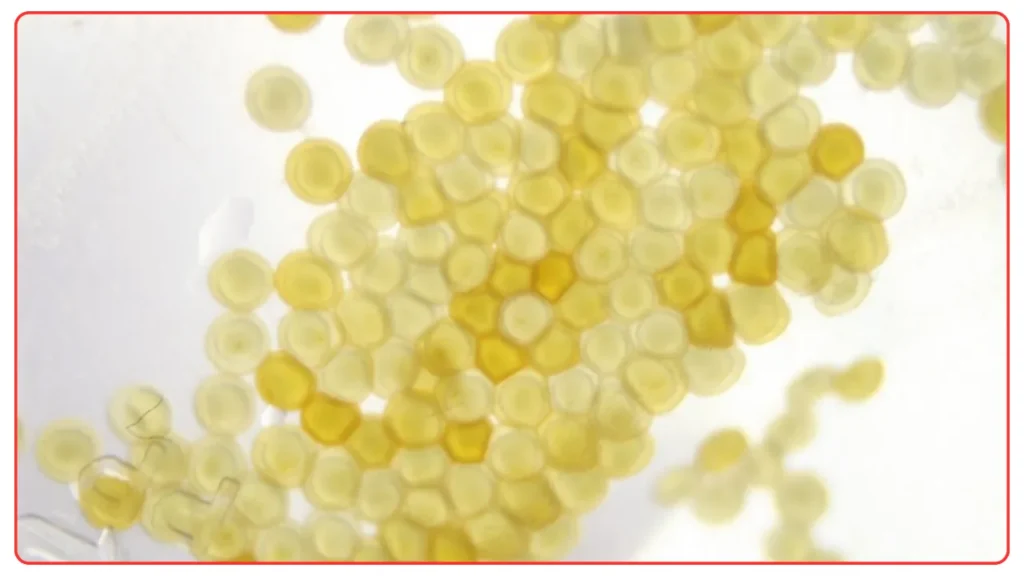
2. Betta Fish Eggs
- Tiny, white, and non-adhesive.
- Found in bubble nests at the water’s surface.
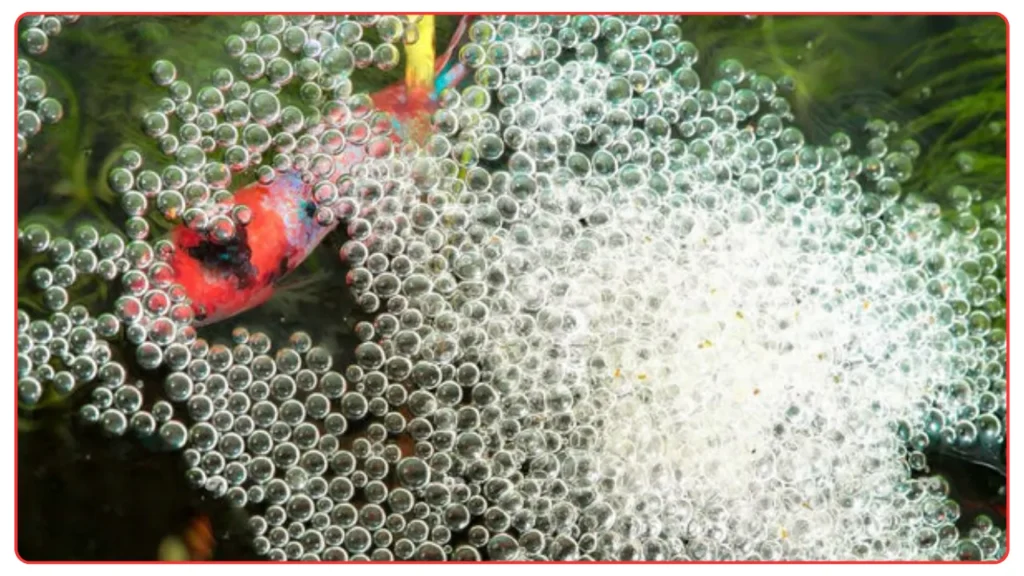
3. Cichlid Eggs
- Larger than many other species.
- Adhesive and laid on flat surfaces.
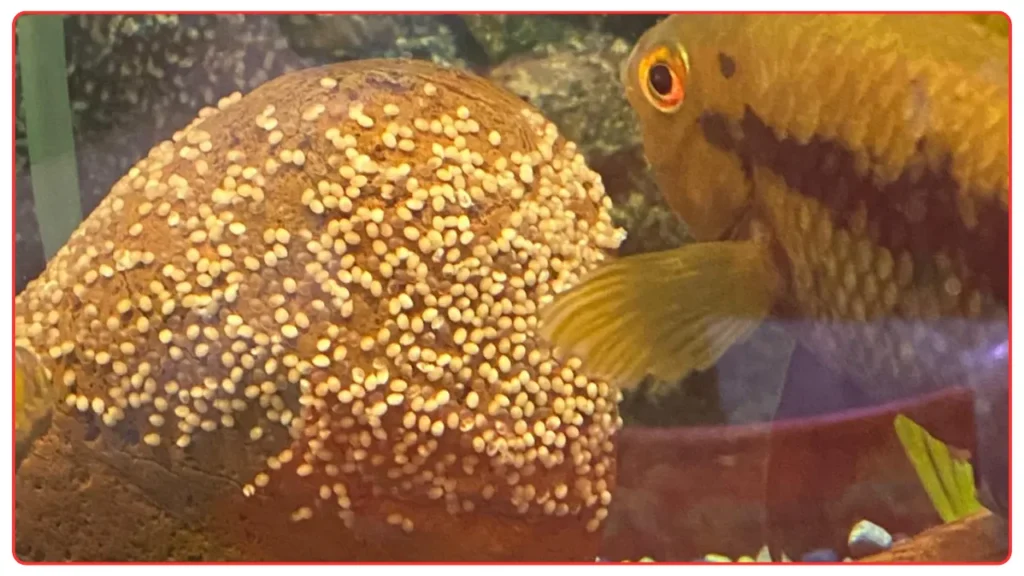
4. Tetra Eggs
- Clear and laid in clusters.
- Often deposited on plants or glass.
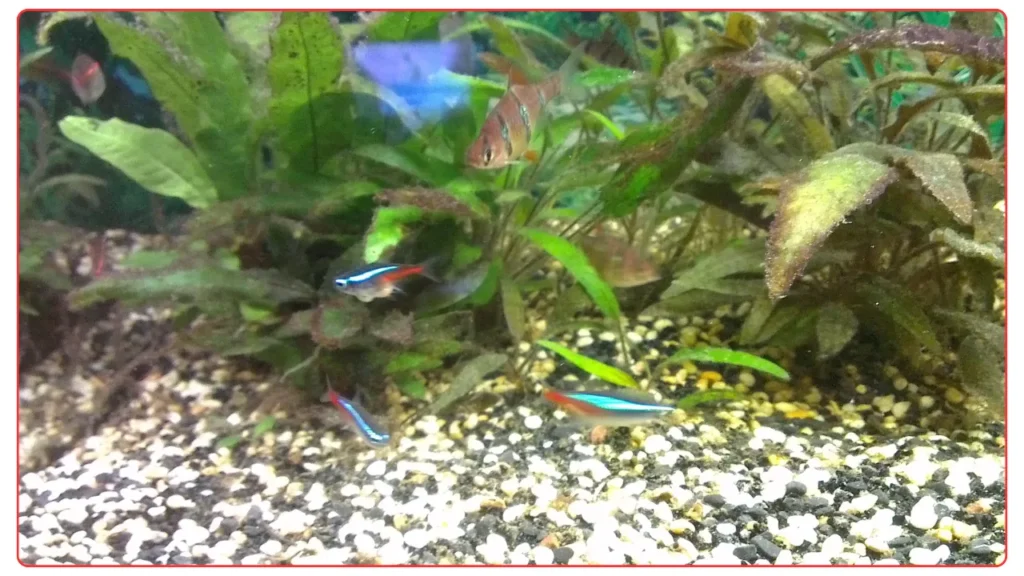
5. Guppy “Eggs”
- Livebearers like guppies do not lay eggs but give birth to free-swimming fry. You won’t find eggs in this case.
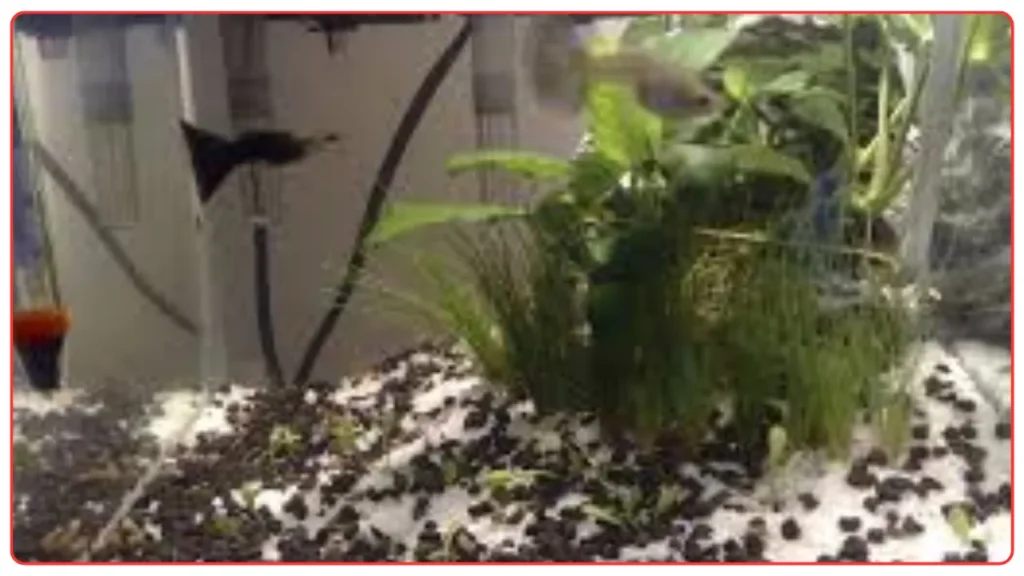
Protecting Fish Eggs from Predators
Predation is a significant risk to fish eggs. Here’s how to protect them:
- Isolate Eggs: Use a breeding tank or net to separate eggs from adult fish.
- Add Hiding Spots: Dense plants or decorations can shield eggs.
- Monitor Tankmates: Remove aggressive or egg-eating species from the tank.
Common Mistakes in Identifying Fish Eggs
Avoid these pitfalls when trying to identify fish eggs in your aquarium:
- Misidentifying Eggs as Algae: Fish eggs are smoother and rounder than algae clusters.
- Neglecting Water Conditions: Poor water quality can harm eggs, leading to fungal growth.
- Ignoring Fish Behavior: Missing pre-breeding signs can make egg identification difficult.
Conclusion
Aquarists get the chance to learn How to Identify Fish Eggs in an Aquarium, which is a blessing in its own. To do this, you can observe the fish’s behavior, check out how the eggs look to make a judgment, and make sure they are taken care of as best as you can. Therefore, a positive environment for breeding and hatching can be created. Comprehending the type of species you have in your tank plays a vital part in your ability to identify their individual characteristics and the proper steps in the cycle to generate a new one.
FAQs
1. How can I tell if fish eggs are healthy?
Healthy fish eggs are clear or slightly opaque. They remain intact and are free of fungus.
2. Do all fish lay eggs?
No, some fish like guppies and mollies are livebearers and give birth to live fry instead of laying eggs.
